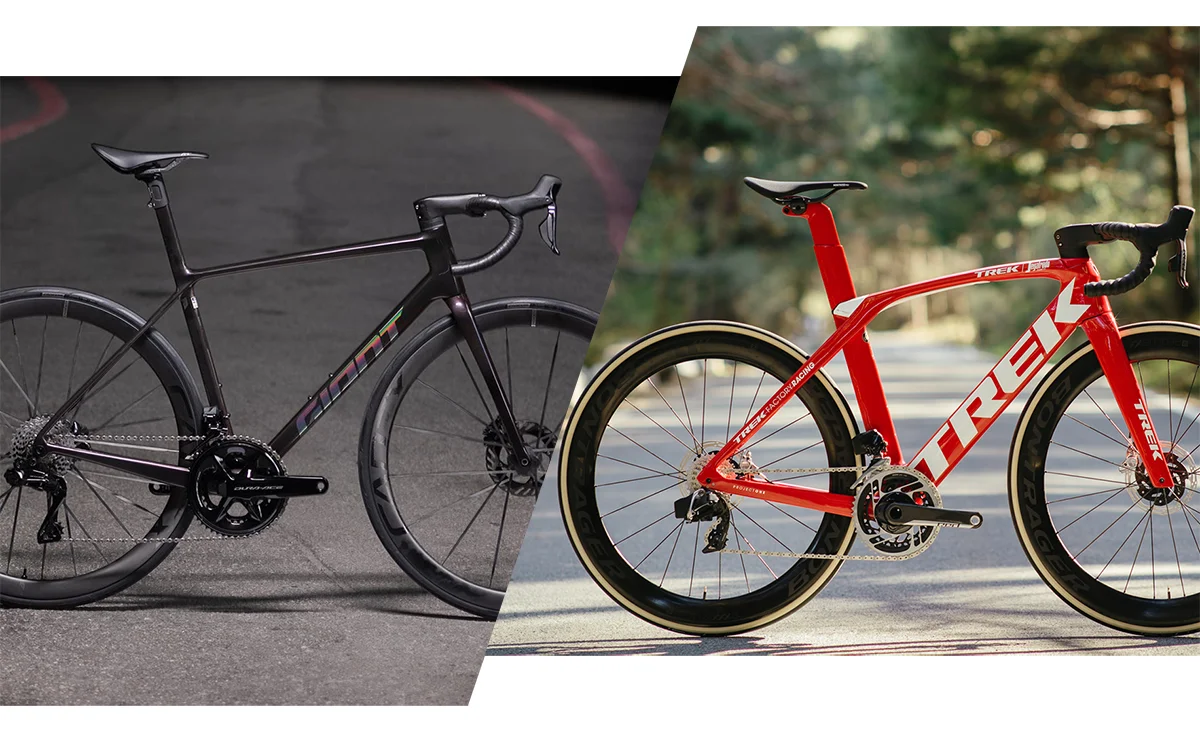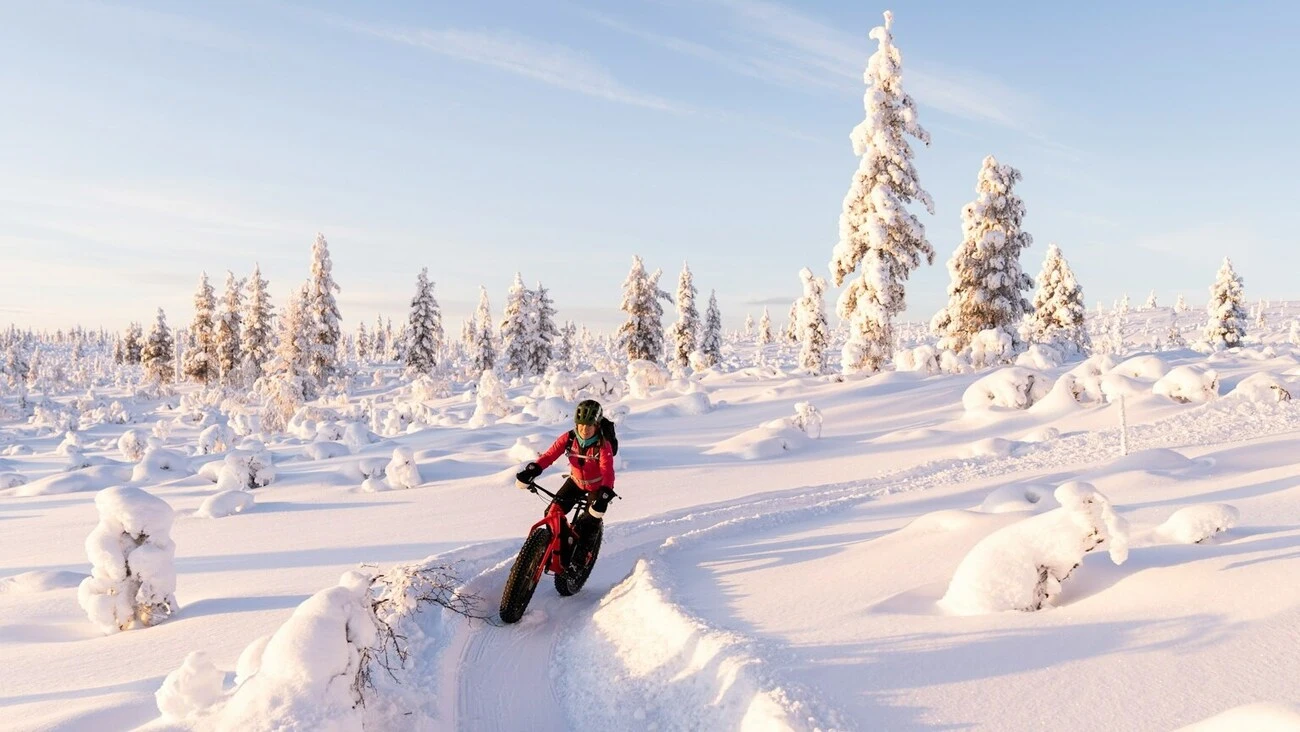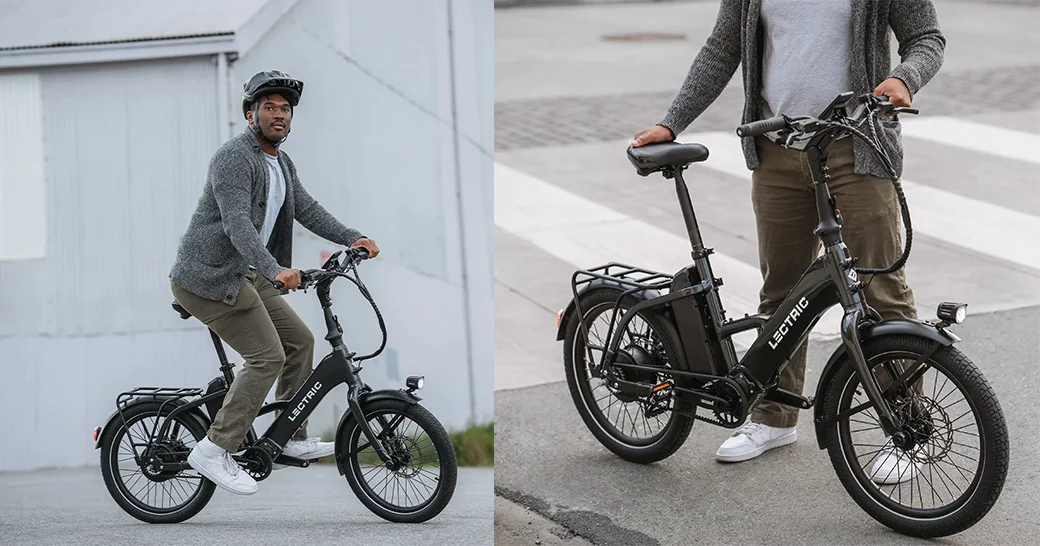Trek and Giant are two titans of the cycling world, dominating the industry’s sales numbers and winning the hearts of fans all around the world.
Both brands have long and rich histories, a diverse bike ranges, and innovative technologies under their respective names that have changed the course of the sport.
Knowing that, it can be challenging to choose between the two, even for experienced riders. So, which one is right for you?
In this comprehensive guide, we’ll analyze both brands and take a closer look at the most important aspects to consider, such as history, bike range, build quality, value for money, technologies, brand reputation, and much more.
Contents
- Trek vs. Giant Brand and History Overview
- Trek vs. Giant Bikes Range
- Trek’s and Giant’s Key Technologies and Innovations
- Trek vs. Giant Price Comparison and Value for Money
- Brand Reputation and Customer Satisfaction
- Giant vs. Trek Frame Warranty
- Trek vs. Giant Grand Tour Wins
- Final Thoughts: Is Trek or Giant Better?
Trek vs. Giant Brand and History Overview
Trek Bikes Brief History
- Founded: 1975
- Founded by: Dick Burke and Bevil Hogg
- Headquarters: Waterloo, Wisconsin, USA
- US Market share: 22.5% (2023)
- Instagram following: 2 Million Followers
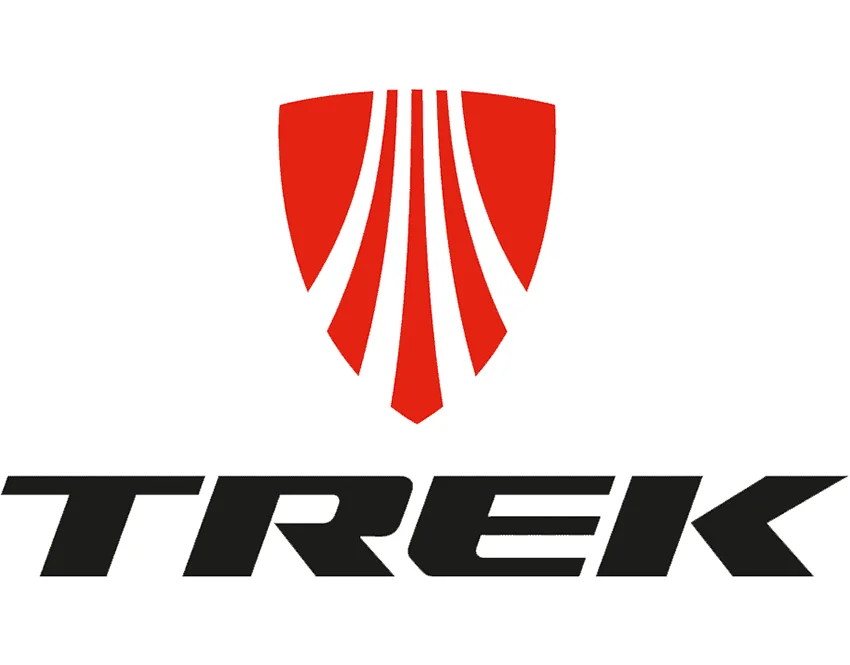
In 1975, Dick Burke and Bevil Hogg created what is now one of the world’s most iconic brands—Trek Bikes. Within four years starting with its hand-brazed steel frame, the company had close to $2M in sales.
In the 80s, continued its expansion, moving to a larger manufacturing facility and expanding its offering to include complete bikes. In 1981, they released the Pro 750 and 950 steel road bikes; two years later, their first mountain bike, and in 1984, Trek entered into the components space with Trek Components Group.
Trek continued to grow and innovate, pioneering new materials and technologies, such as aluminum, carbon fiber, and suspension systems, to create lighter, faster, and more comfortable bikes. Trek has also sponsored teams and athletes for decades, and has been associated with some of the most successful and influential cyclists in history, such as Greg LeMond, Lance Armstrong, Fabian Cancellara, and Jens Voigt.
From its humble beginnings with hand-brazed steel frames, Trek Bikes rapidly grew into a cycling industry leader, renowned for technological innovation, professional sponsorship, and global reach.
Trek continues to sponsor several professional and amateur racing teams, including the World Tour Lidl-Trek road racing team (2024) and Trek Factory Racing mountain biking team. Additionally, they fund charitable and environmental initiatives.
Trek is still headquartered in Waterloo, where it operates one of its five Wisconsin factories. Its subsidiaries include Electra, a cruiser-specific brand; Bontrager, the components and accessory brand; and Trek Travel, a cycling tour operator. Trek currently has distributors in over 60 countries and sells close to a million bikes a year.
Giant Bikes Brief History
- Founded: 1972
- Founded by: King Liu
- Headquarters: Dajia, Taichung, Taiwan
- Market share: 10.5% (2023)
- Instagram following: 716K Followers
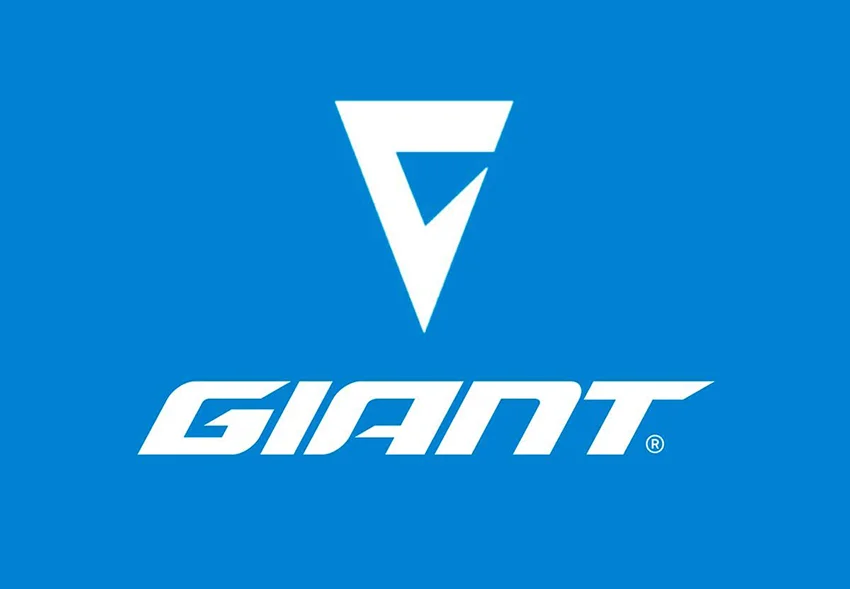
Giant Bikes is the world’s largest designer and manufacturer of bicycles under both its own brand and manufacturer for other bike companies. For almost 10 years, Giant was solely a manufacturer contracted by other brands to make their bikes at its factories in Taiwan. In 1981, Giant launched its own brand of bikes.
Like Trek, Giant’s research and development has helped drive the industry forward over the years. Innovations in the computer-aided design (CAD) of carbon fiber bikes brought this material to the masses in the form of the CADEX road bike. Additionally, in 1995, they created the compact road frame, which is still used widely today.
Giant Bikes transitioned from building bikes for other brands to becoming the world’s largest bike company, known for making carbon bikes affordable and supporting pro racing.
Over the years, Giant has sponsored various professional teams and had its industry-leading bikes, such as the TCR, used to win many races.
Giant’s behemoth operation comprises over 5,000 employees worldwide and two subsidiary brands.
The first one is Liv, a company that specializes in female-specific bikes and products and sponsors a female professional road cycling team. The other one is Momentum, a lifestyle bike brand that produces more approachable bikes than the typical performance-focused bikes under the Giant branding.
Trek vs. Giant Bikes Range
Both Trek and Giant Bikes are known for manufacturing a huge range of different types of bikes.
They offer models in almost all popular bike categories, including mountain, road, gravel, urban, and electric bikes.
Below, we’ll do a detailed breakdown of each of these categories and compare Trek vs. Giant in terms of bike range, value for the money, technologies, and more.
Mountain Bikes
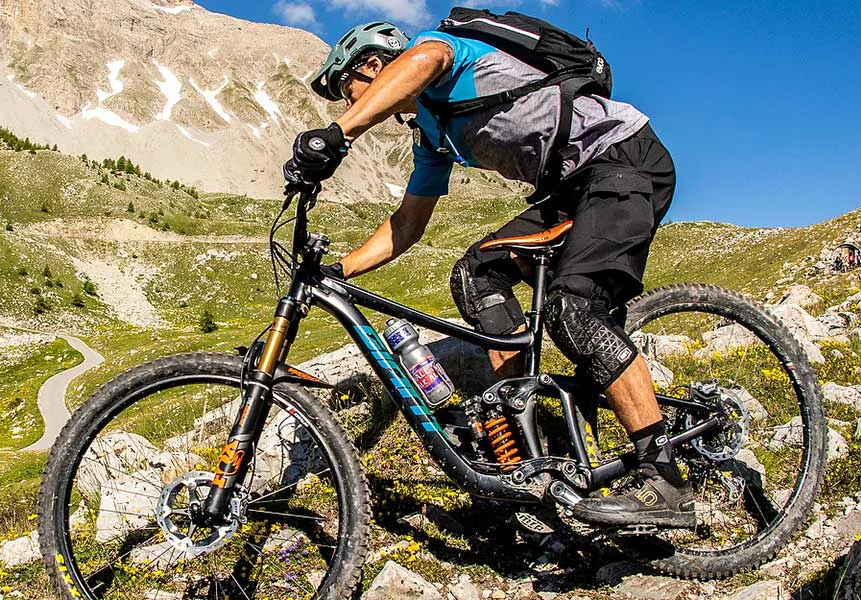
When it comes to mountain bikes, both brands make top-of-the-line models that are ridden by some of the best MTB athletes in the world. However, they make a range of models suitable for beginners, enthusiasts, and amateur racers as well.
In terms of pricing, both Trek’s and Giant’s models start at around $500 and reach $15,000 for the most expensive models. Therefore, anyone can find a price range that suits their budget.
One area in which Trek dominates Giant is the selection. At the moment of writing this review (April 2024), Trek has 140 models on offer, whereas Giant only offers 50.
Some of Trek’s most popular models include the Supercaliber, Fuel EX, Slash, Marlin, Rail, Top Fuel and Fuel, Procaliber, and so on. On the other hand, Giant’s top-selling models include the Trance, Reign, Glory, Anthem, XTC, Stance, Fathom, Talon, and ATX.
When it comes to the value for the money you get for your money, it’s tough to come to a definitive conclusion. However, entry-level Trek’s bikes look and feel more sophisticated than Giant bikes, for example the Marlin models. On the other hand, Giant has some great mid-priced deals, such as the Stance full-suspension bike for $1,400.
Related reviews:
Road Bikes
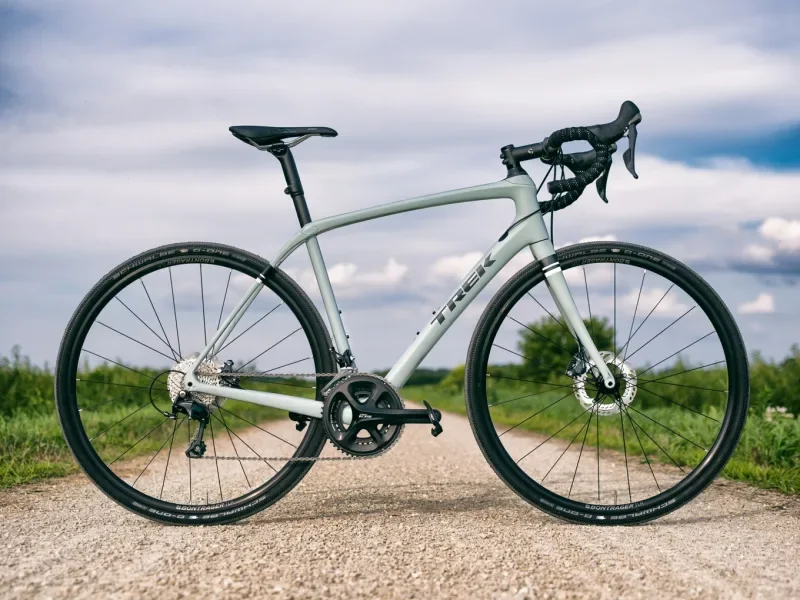
If you’re a sworn roadie, you won’t have an easy time choosing between Trek and Giant. Both models have sophisticated and lightweight road bikes in different price categories.
Trek again takes the win when it comes to quantity with almost 80 models on offer, compared to Giant’s 45 models. But who takes the lead in quality?
It’s tough to answer this question, as both Trek’s and Giant’s bikes are a common sight in Grand Tour races such as the Tour de France, Giro d’ Italia, and La Vuelta. Trek’s flagship road bikes include the Domane, Madone, Emonda; Giant boasts models like Propel, TCR, and Defy.
If you’re looking for an endurance road bike, we recommend going with Giant’s Defy, known for offering more value than Trek’s Domane. However, if you’re a racer and you have money to spare, Trek’s Madone and Emonda are hard to beat.
However, if you’re shopping for an aluminum road bike on a tight budget, Giant offers its Contend model for as little as $800, whereas Trek’s Domane AL starts at around $1,150.
All in all, Trek’s road bike legacy and pedigree are hard to beat, but Giant’s pricing and value for the money make choosing between the two a lot harder.
Related reviews:
- Trek Domane AL 2 Review
- Trek Domane AL 3 Review
- Trek Domane SL 4 Review
- Trek Domane SL 5 Review
- Trek Domane SL 6 Review
Gravel Bikes
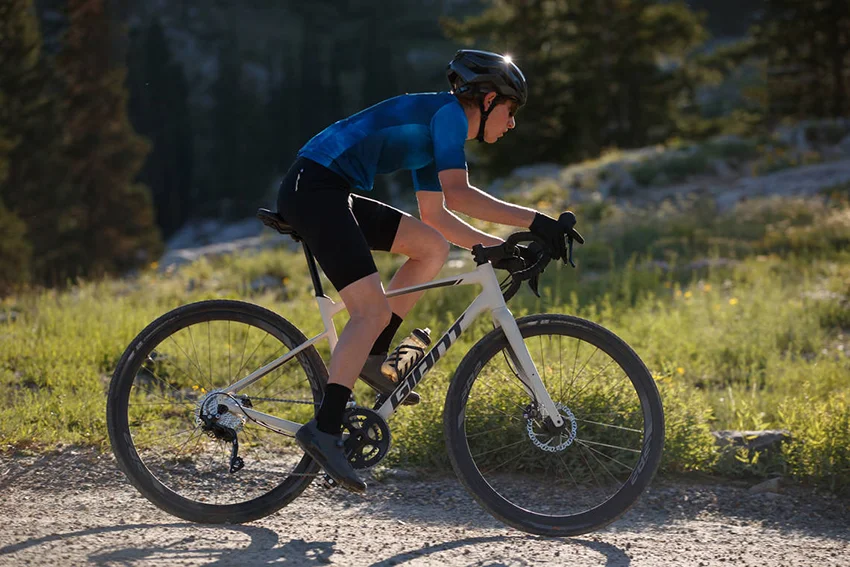
Gravel riding is a cycling discipline that has been gaining popularity incredibly quickly. Unfortunately, both Trek’s and Giant’s lineups are rather thin.
Both brands offer one gravel model only, with carbon and aluminum frames and multiple build levels—Trek has the Checkpoint, while Giant has the Revolt.
Giant’s Revolt is significantly lower priced, offering builds between $1,350 and $7,500. Trek’s Checkpoint, on the other hand, ranges in price from $1,700 to $12,250.
So, it’s pretty clear that if you’re a beginner or you’re shopping on a tight budget, Giant is the way to go. But if you want sophistication, higher-end components, and better looks (which is subjective), we recommend choosing the Trek Checkpoint.
Another big difference between the two is the fact that Giant’s top builds come with front suspension, while Checkpoint has no suspension, except for the IsoSpeed frame technology.
The final choice between the two brands, in our opinion, boils down to your riding style and intended use. If you’re buying a gravel bike to do some bikepacking and exploring, Checkpoint takes the lead. However, if you’re looking to do serious racing and you need suspension, we believe Giant’s Revolt is a better choice.
City and Active Bikes

One thing that Giant and Trek have in common is that they have sister brands that focus solely on city and active bikes. Therefore, Trek and Giant don’t have too many bikes in these categories under their names.
Instead, Trek has Electra urban bikes, whereas Giant has Momentum bikes. Electra specializes in cruiser, city, and electric urban bikes, whereas Momentum has a large selection of analog and electric models for commuting, leisure, and utility.
Still, Trek offers a few popular urban models, such as the FX, Verve, and Dual Sport; whereas Giant has only two—the Escape and Cypress.
All Giant’s escape models are low-tier and cost under $1,000. On the other hand, Trek’s range is richer and includes models in several price categories.
But, taking everything into consideration, we’d give Giant’s Momentum a slight advantage over Trek’s Electra because of better design, a wider selection of models (including cargo bikes), and lots of electric builds.
However, if you want to pay less and get good quality and a focus on comfort, you should consider Electra. With its Flat Foot design, it’s the ultimate choice for leisure riding.
Electric Bikes
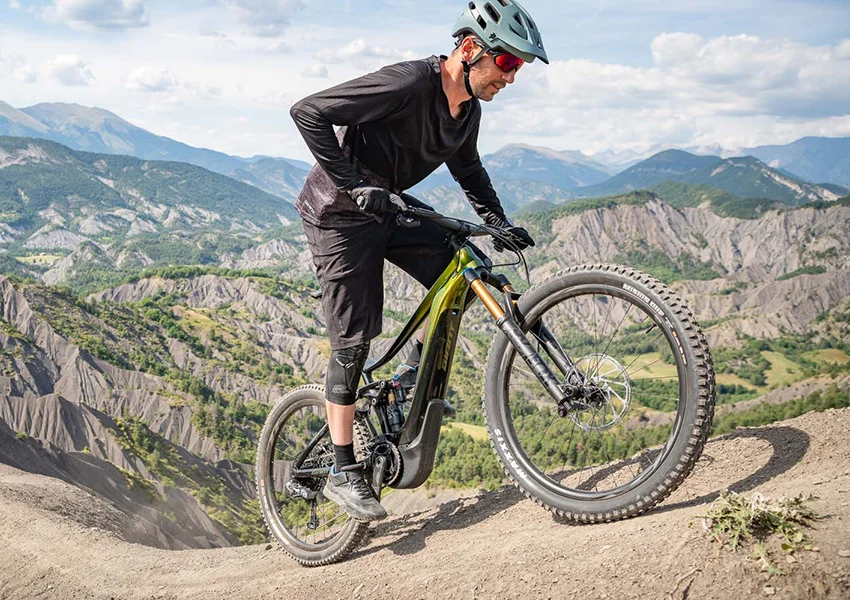
More and more people are hopping on electric bikes recently, so big brands need to meet the demand. Both Trek and Giant are doing a good job in this regard, though Trek has allotted more resources to their electric lineup.
In general, both brands offer most of their flagship models in both analog and electric versions.
For example, Trek’s Domane, Dual-Sport, Fuel EX, FX, Verve and Rail have electric counterparts equipped with high-quality Bosch motors. On the other hand, Giant offers its Talon, Trance, Stance, and Reign models with its proprietary SyncDrive motors. Unfortunately, Giant doesn’t have any electric road bikes, such as Trek’s Domane+.
Of course, in addition to these ebikes, both brands offer additional electric models through their sister brands Electra and Momentum.
We’d say that Trek has a lead in this category mainly because it has a wider range of ebikes on offer and uses premium Bosch electronics. That’s not to say Giant’s SyncDrive is bad, because it’s not, but Bosch is the leading name in the industry.
Trek’s and Giant’s Key Technologies and Innovations
Both Trek and Giant have been at the forefront of technological innovation in cycling for decades. Both brands have pioneered several systems and improvements that have changed the course of the sport.
Let’s take a closer look at some of the most important ones.
Trek’s Key Technologies and Innovations
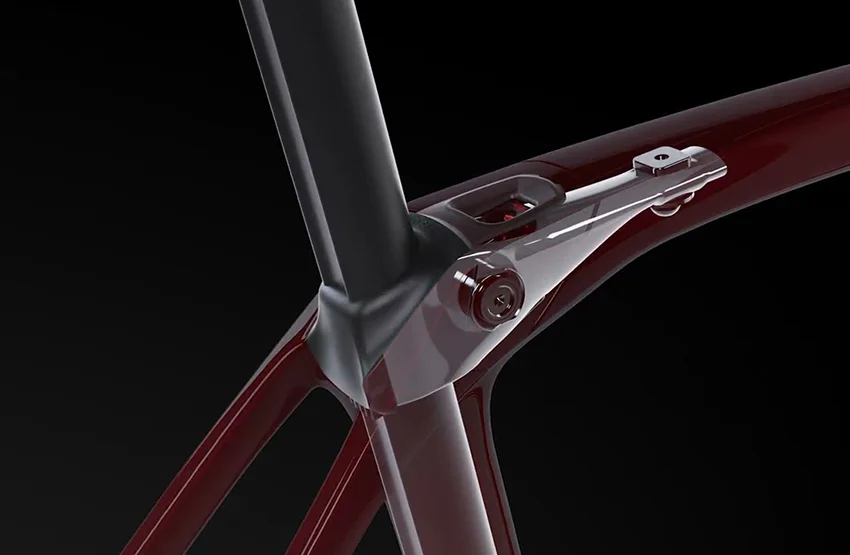
- OCLV Carbon: Optimum Compaction Low Void (OCLV) Carbon refers to Trek’s special carbon fiber layup used for manufacturing lightweight and stiff carbon framesets found on Trek’s best bikes. This layup system allows Trek to control which types of carbon fiber and resin are used, as well as their orientation, leading to increased strength and decreased weight.
- IsoSpeed: IsoSpeed is a decoupling technology seen on numerous Trek’s racing and endurance road bikes. This technology separates the seat tube from the top tube, allowing them to flex independently and absorb road chatter and vibrations. This translates to a smoother ride, improving comfort and reducing fatigue.
- Active Braking Pivot (ABP): This is Trek’s proprietary suspension technology seen on their full-suspension mountain bikes. This system allows the suspension to remain active even during braking, preventing it from stiffening and improving grip and control.
- WaveCel Helmet Technology: This technology refers to a collapsible cellular material found on Bontrager helmets that collapses under impact and absorbs energy during hard impacts. It’s found to be more effective than standard foam helmets at reducing the risk of concussions.
- Blendr System: Blendr is an innovative universal mounting system that allows for interchangeable attachment of cycling computers, lights, and other accessories directly to stems found on Trek’s bikes.
Giant’s Key Technologies and Innovations
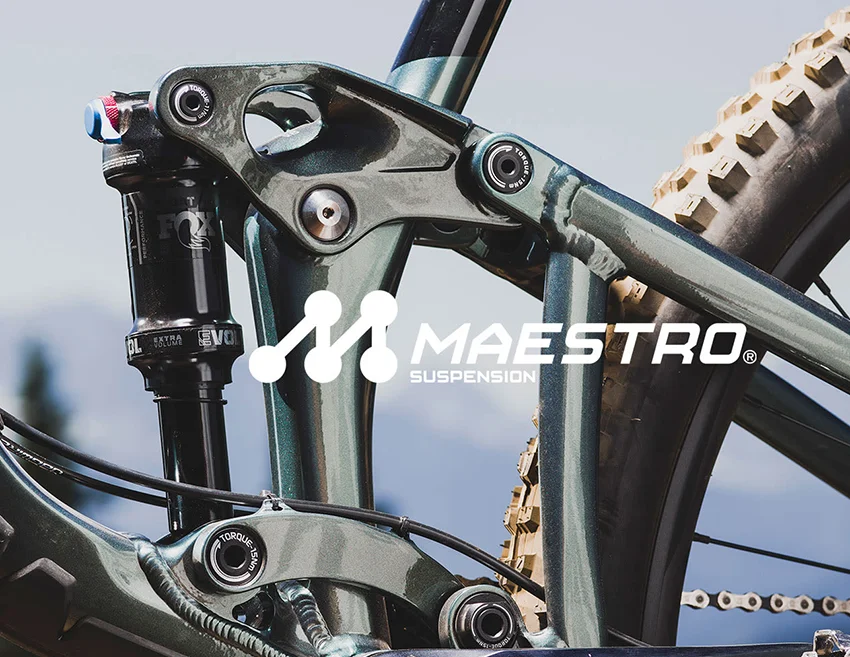
- Compact Road Geometry: Most modern road bikes feature a sloping top tube, known as compact road geometry, which was pioneered by Giant. This design has numerous advantages over traditional horizontal top tube designs, such as increased frame stiffness, improved rider fit, reduced weight, and better responsiveness.
- ALUXX Aluminum: Giant is the world’s leading manufacturer of bike frames and their ALUXX aluminum is known for having the best strength-to-weight ratio. These frames are known to be incredibly light and responsive.
- Maestro Suspension: Maestro is Giant’s suspension design found on the brand’s full-suspension mountain bikes. This design uses four pivots and two floating linkages, which improves pedaling efficiency and minimizes pedal-induced bobbing.
- OverDrive Steerer Tube: The OverDrive steerer tube standard introduces a larger diameter steerer tube that improves front-end stiffness, control, and steering precision.
- SyncDrive Motors: SyncDrive mid-drive motors have been developed by Giant and Yamaha and are specifically designed and tuned for Giant’s electric bikes. They provide smooth, quiet, and natural-feeling assistance.
Trek vs. Giant Price Comparison and Value for Money
Value for the money is one of the main things prospective buyers are interested in when considering Trek Bikes vs. Giant Bikes.
While the two brands are pretty similar in terms of the total price range, some differences begin to appear when you take a deep dive into individual categories.
Let’s dissect the bang for the buck you get if you’re a budget-conscious rider, enthusiast, or a pro.
Budget-Conscious Riders
When it comes to budget-conscious riders, both brands have a decent selection of models in the $500-$800 range. You’ll find similar specs in this price range, so you won’t go wrong whichever of the two names you choose.
The main way to get more value for the money in this category is to be on the lookout for promotions and discounts, which would allow you to save a few hundred dollars at best.
Enthusiasts
Cycling enthusiasts are mainly interested in mid-range bikes that cost between $1,000 and $2,500, which is where real differences between Giant and Trek start to appear.
Namely, both brands have a huge selection of bikes in this price range, but Trek tends to lean a bit pricier for comparable specs.
Giant will typically offer slightly better specs for the same price compared to Trek in this category, though Trek might offer a better and lighter frame.
Pros and Hobbyists with Deep Pockets
In the high-end category of bikes that cost more than $2,500, both brands offer a decent lineup of high-tech models that cost upwards of $10,000.
Price-wise, you’ll see variations based on the model and subcategory, though Giant seems to offer slightly better specs for the money. However, Trek might excel in a specific type of frame design or suspension, but Giant takes the lead by offering a better drivetrain at a specific price point.
Overall Value for Money
Our overall impression is that Giant has a slight advantage in terms of value, particularly for enthusiast-level riders. Giant often manages to squeeze in slightly nicer components at similar price points compared to Trek.
However, this isn’t a rule set in stone, and the difference isn’t always gigantic. In addition to the value for the money, it’s also important to consider your personal preferences, such as aesthetic tastes and riding style.
Brand Reputation and Customer Satisfaction
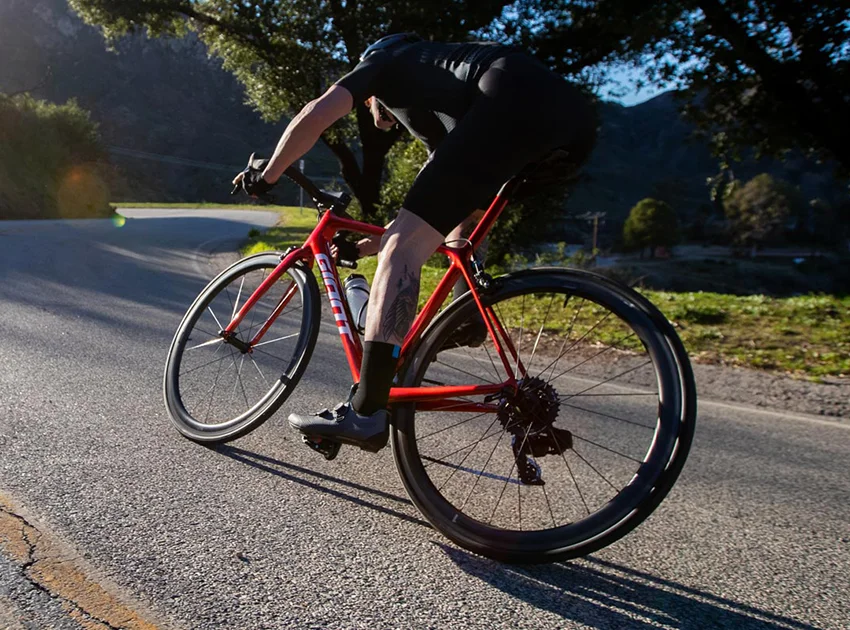
Both Trek and Giant are top-tier brands with stellar reputations in the industry. They’re regarded and respectable and responsible companies with great customer support and excellent customer satisfaction.
Both brands have thousands of authorized dealers around the world, including in the United States, which makes it easy to service your bike or replace parts under warranty.
There are some slight differences, though. Trek has a small lead in brand perception due to its association with professional road cycling and its USA origins. On the other hand, Giant holds a slight edge when it comes to the value proposition, offering slightly better components at a comparable price point.
Therefore, customer satisfaction levels are pretty high for both brands. Riders value Trek’s and Giant’s bikes’ reliability, performance, design, and innovative features.
Giant vs. Trek Frame Warranty
| Feature | Trek | Giant |
|---|---|---|
| Frame (original owner) | Lifetime for all | Lifetime (3 years for downhill frames) |
| Frame (subsequent owners) | 3 years | 2 Years |
| Rigid Fork (original owner) | Lifetime | 10 Years |
| Carbon Wheel Rims | Lifetime | 1 Year |
| Paint & Decals | 2 Years | 1 Year |
| Components & Accessories | 2 years | 1-2 Years (depending on component) |
| Apparel | 2 years | Not covered |
Being two of the world’s biggest cycling brands, it doesn’t come as a surprise that Giant and Trek have excellent warranty policies that they respect without question if all conditions are met.
However, Trek offers slightly better terms than Giant. Namely, Trek offers a lifetime warranty on frame and rigid fork, main frame, and full-suspension swing arms. On the other hand, Giant offers a lifetime warranty on frames only, with the exception of downhill frames which have a 3-year warranty. In addition, rigid forks have a 10-year warranty.
Both Trek and Giant offer excellent bike warranties, but Trek’s coverage is slightly longer for frames, forks, and paint.
The warranty on components and other parts is comparable—both brands offer two years of warranty on these items. However, Trek again has a slight edge by offer a 2-year warranty on paint and decals, compared to Giant’s one-year warranty.
Therefore, even though the differences are small, Trek has a slight lead over Giant by offering a longer and more encompassing warranty.
Trek vs. Giant Grand Tour Wins
When it comes to grand tour wins, Trek dominates Giant with seven Tour de France wins (later disqualified), one Giro d’Italia and one Vuelta a España wins. Giant, on the other hand, has no overall classification wins on Grand Tour road races.
Take a look at the table below for more information.
| Brand | Grand Tour | Year | Team | Rider | Notes |
|---|---|---|---|---|---|
| Trek | Tour de France | 1999-2005 | US Postal Service (later Discovery Channel) | Lance Armstrong (later disqualified) | Seven consecutive wins, all later disqualified |
| Trek | Giro d’Italia | 2008 | Team CSC | Alberto Contador | One overall win |
| Trek | Vuelta a España | 2013 | RadioShack-Leopard Trek | Chris Horner | One overall win |
| Giant | Tour de France | – | – | – | No overall wins |
| Giant | Giro d’Italia | – | – | – | No overall wins |
| Giant | Vuelta a España | – | – | – | No overall wins |
Final Thoughts: Is Trek or Giant Better?

Trek and Giant are both huge brands in the cycling industry, offering top-notch bikes across various disciplines.
Trek might have a slight edge in overall brand reputation and a richer history, especially when it comes to road racing. However, Giant is highly competitive, consistently delivering outstanding value for money.
The best brand for you ultimately depends on your individual needs. When choosing, we recommend to consider your budget, riding style, and the type of bike you’re looking for. If possible, test ride bikes from both brands to get a feel for what suits you best.
Ultimately, whether you choose a Trek or a Giant, you’re in for a phenomenal ride!

